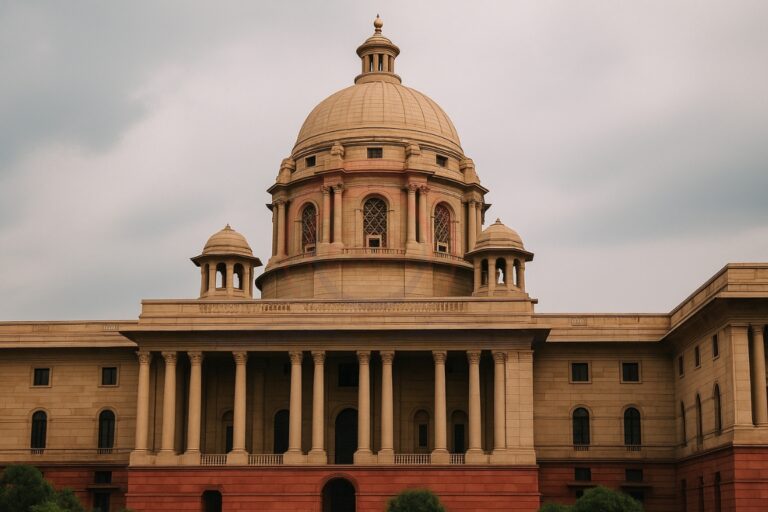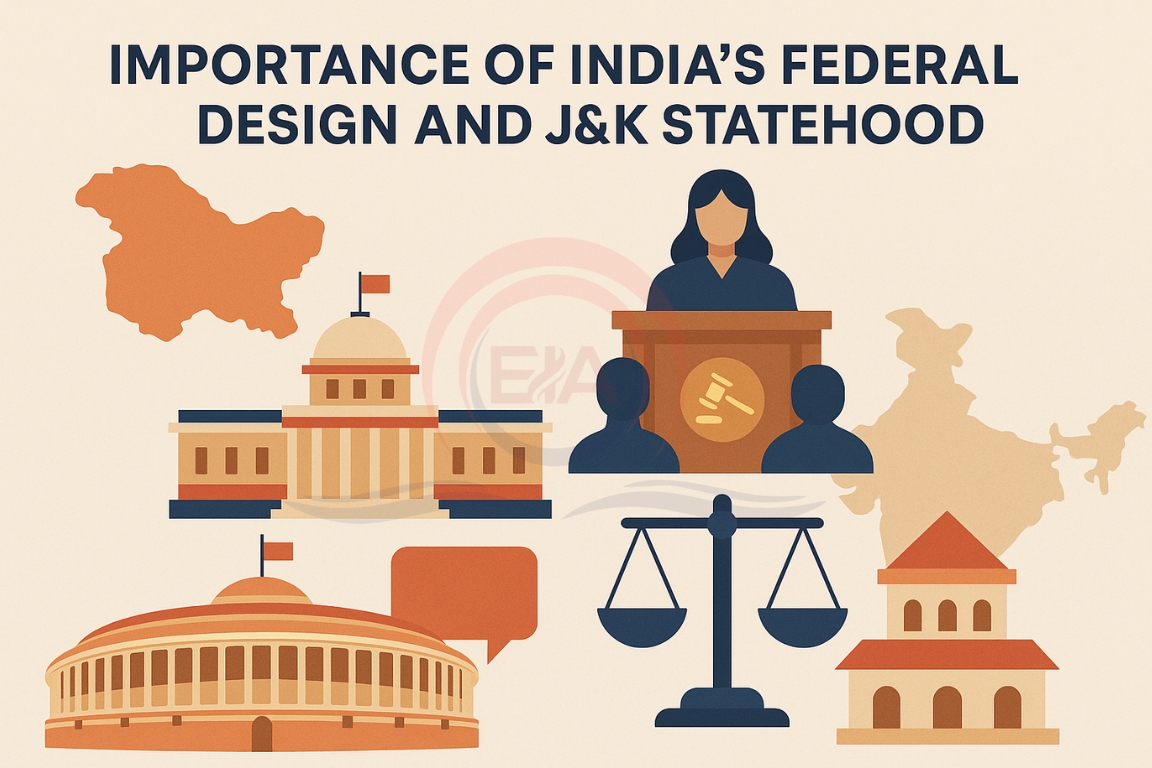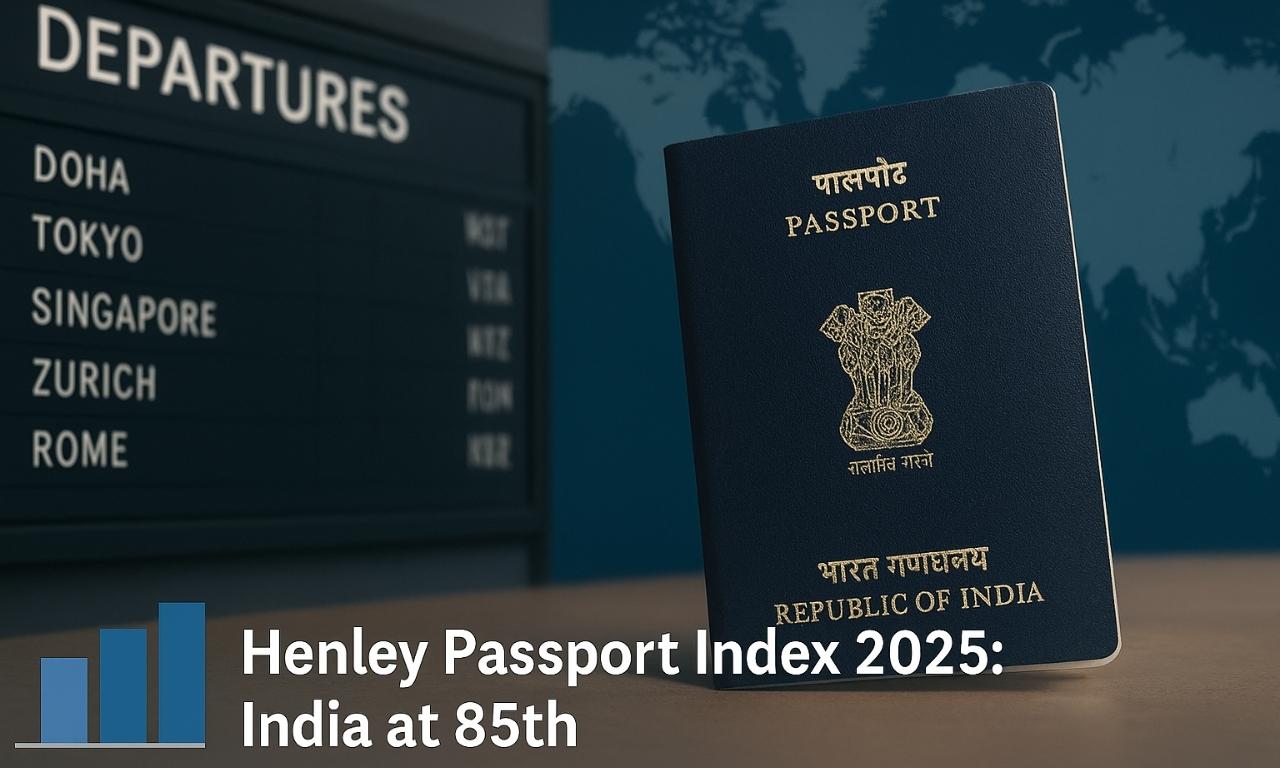The Supreme Court has sought a detailed response from the Centre on restoring the statehood of Jammu and Kashmir, citing federal principles and citizens’ rights.
Background
- The issue arises from the abrogation of Articles 370 and 35A in August 2019, which converted J&K from a State into a Union Territory.
- Legislative Assembly elections were held in October 2024, but statehood has not yet been restored.
- The case is being heard in Zahoor Ahmed Bhat vs. UT of J&K, emphasizing the federal character of India and separation of powers.

Current Status of J&K
- Supreme Court directed restoration of statehood and holding of Legislative Assembly elections.
- Elections have been conducted, but statehood is not yet restored.
- Delay affects: Citizens’ rights. Federal balance between Centre and State. Powers of elected government vs. Lieutenant Governor.
Rationale Behind Delayed Restoration of Statehood to J&K
- Security Concerns: J&K is a border-sensitive region with ongoing cross-border threats; central control via the Lieutenant Governor ensures better security and law enforcement.
- Ground-Level Stability: Restoration is delayed until local governance, law and order, and peaceful conditions are ensured.
- Administrative Transition: Moving from Union Territory to Statehood requires careful management of powers between the LG and elected government to avoid disruption.
- Strategic and Political Considerations: The government balances national security, political stability, and long-term integration before granting full statehood.
CONSTITUTIONAL PROCESSES FOR CREATING STATES IN INDIA
Admission
- Definition: Incorporating new political units into the territory of India.
- Constitutional Reference: Article 2 – Parliament may admit new States into the Union of India.
- Example: Jammu and Kashmir joined India in 1947 through the Instrument of Accession.
Establishment
- Definition: Acquiring territory in accordance with international law and establishing it as a State.
- Constitutional Reference: Article 2 also covers the power to establish new States through agreements with territories or countries.
- Example:
- Goa became a State after integration from Portuguese rule (1961).
- Sikkim became a State in 1975 after merger with India.
Formation / Reorganisation
- Article 3 – Parliament may:
- Form a new State by separating territory from any State.
- Unite two or more States or parts of States.
- Unite any territory to a part of any State.
- Increase or diminish the area of any State.
- Alter boundaries of any State.
- Alter the name of any State.
- Restriction: Union cannot convert a State into a Union Territory arbitrarily, as it would violate federal principles.
- Example:
- Reorganisation of States in 1956 (States Reorganisation Act).
- Jammu and Kashmir reorganisation under Jammu & Kashmir Reorganisation Act, 2019.
Federalism:
- Federalism is a system of government in which powers are divided and shared between a central authority (Union) and regional units (States), each with its own jurisdiction and autonomy.
Key Features of Federalism:
- Dual Government: There are two levels of government — the Union and the States — each functioning independently in their respective spheres.
- Written Constitution: Powers, responsibilities, and boundaries of governments are clearly defined in a written constitution.
- Division of Powers: Subjects of governance are divided into Union List, State List, and Concurrent List (as in India).
- Supremacy of Constitution: Both Union and States derive their powers from the Constitution; neither can act beyond it.
India’s Federal Design
- India is a Union of States: indivisible; States cannot secede.
- Article 1: ‘Union’ emphasizes unitary character, while ‘Bharat’ reflects cultural unity.
- Federalism ensures: Equitable distribution of resources. States’ representation at the national level through Rajya Sabha (Article 83).
- The design balances strong Centre with State autonomy, making federal character part of the Basic Structure of the Constitution.
Conclusion:
India’s unique federal design ensures unity with diversity. Restoring Jammu and Kashmir’s statehood is crucial to maintain the sanctity of federation, citizens’ rights, and the balance of power between Centre and States.





